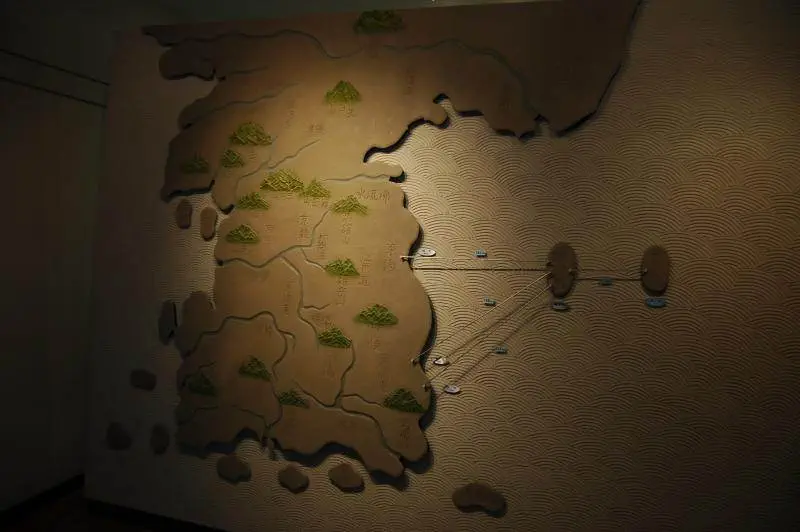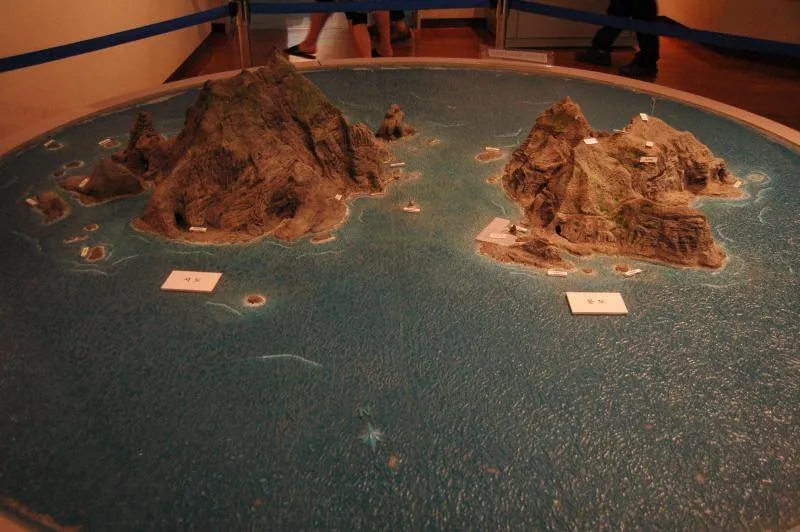
As part of my recent trip to Ulleungdo (see part 1, part 2, and part 3), I checked out the Dokdo Museum on the island. For those of you tuning in from outside the Korean peninsula, Dokdo is a set of two islands that both Korea and Japan believe to be theirs. Located about halfway between the two countries, Korea’s claim to the tiny rocks has risen to a nationalistic fervor that peaks occasionally. It’s a mountain that’s been made out of a molehill – er, two tiny little rocks. While this museum is meant for nationalistic locals and designed to increase the fervor of the same, there’s enough English to assist any foreigners that might find their way in as well.

Let’s start with a reproduction of an inaccurate map of the country. It was about here (the very beginning of the museum) that a Korean came up to me, asking me if I knew what Dokdo was. Uh, yeah, duh. That’s why I’m here.

As evidence to bolster Korea’s claims to Dokdo, the museum displays a number of maps showing Dokdo to be Korean territory. I recognize that old maps are necessarily inaccurate – look at the shapes that Japan is drawn as.

OK, so this version is a bit more accurate – thanks mainly to GPS scanners and 21st century technology. That’s beside the point however.

1697: An Yong Bok, a Korean fisherman from Busan, is shown expelling Japanese fishermen from Dokdo. This came after he visited Hokishu county in Japan (what we’d call Tottori Prefecture these days) and got confirmation from the governor of said country that Dokdo belonged to Joseon (Korea’s dynasty at the time).

1936: Japan did a land survey of Korea during its occupation of the country. In its description of Ulleungdo and Dokdo? They were originally the territories of Korea.
Fast forward to post World War II, where Japan was forced to give back the territories (including the colony of Korea) it had previously claimed. Although the first through fifth drafts of the Treaty of San Francisco had given Dokdo back to Korea, the sixth and seventh drafts kept the islands under Japan’s control. The final version – the one actually put into effect – completely omitted the islands (Source: Wikipedia). What you see is the museum is this:

“Japan’s absurd territorial claims over Dokdo” – Korea says one thing, Japan says another. Read the sign if you like.

1953-1956: Some photos and memorabilia from the Dokdo Volunteer Guards’ ‘Vigilante Activity’. For three and a half years, this group pushed back against a number of Japanese ships in the name of protecting the island, winning recognition and awards years later.

In case you’re wondering what the value of two small rocks is, this room is more than happy to explain – “a treasure trove of marine life”, one panel explains; “A valuable geological site”, proclaims another. Not pictured is an emotionally-charged video loop where Koreans explain what these two rocks mean to them.
Don’t come here looking for an intellectual conversation or a fair hearing on the issue. That might be possible were the facts not twisted and/or missing, and people willing to think for themselves instead of reciting the nationalistic mindset. That people only hear one side of the story is not surprising; that people believe there to be only one possible solution (causing Japan to lose face by forfeiting what they perceive as their land) is. Ask the locals if they’re familiar with the International Court of Justice – arguably the court system that would decide this thing – and you’re likely to get a blank stare. Ask them which side has tried to resolve this thing by taking it to the ICJ (Japan did, in 1954 and 1962). Ask them why two islands where neither country has established a colony really matters. The museum would be a great place to ask people who think they know.



Ref the above comment–I can just imagine.
My students always tell me that Dokdo matters because of the fishing rights. Did the museum cover the fishing, the annual take, the number of ships trawling there in current history?
Nice job, BTW.